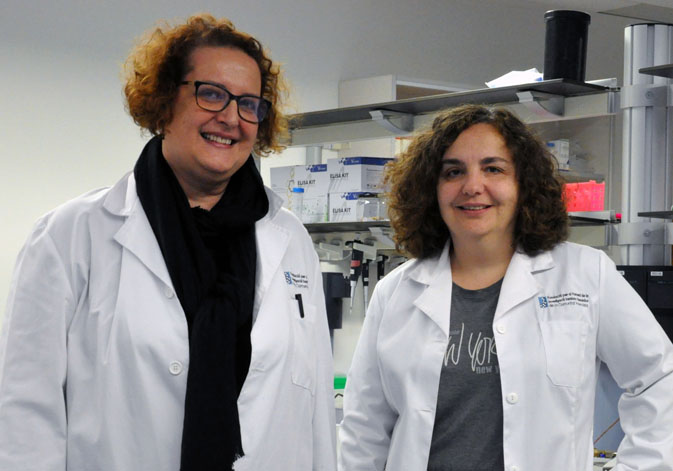
A research team with the participation of the Institute for Integrative Systems Biology (I2SysBio) of the University of Valencia and CSIC, together with FISABIO and CIBERESP, has carried out the first metatranscriptomic study of the gut microbiota of babies, which has allowed to unveil the metabolism of the intestinal bacterial community during the first year of life, with a level of detail unknown until now.
This work has also involved researchers from the Joint Unit in Genomics and Health of the Foundation for the Promotion of Health and Biomedical Research of the Valencian Community (FISABIO) and the Biomedical Research Consortium in Epidemiology and Public Health Network (CIBERESP), dependent on the Carlos III Health Institute.
The environment is very important in the first years of life, both for the baby and for the bacteria of its gut microbiota. Bacteria and humans coexist in a harmonious symbiosis: people share with them the food they eat, which helps them to metabolise (10% of the energy obtained from food is as a consequence of bacterial action). In addition, bacteria influence the development of the immune and nervous systems.
Thus, the study has examined the expression of all the bacterial genes that are part of the intestinal flora of the baby from faecal samples obtained at 4 time points throughout the first year of life: 7 days after birth and at 3, 7 and 12 months old. The analysis was also performed on samples of the mothers obtained one week before the birth and one year later.
“In this study we have explored how the environment influences the gene expression of the bacterial community of the baby’s intestine, in particular the type of diet (which changes drastically during the first year of life mainly with the introduction of solid food)”, explains María José Gosalbes, CIBEResp researcher at FISABIO and first author of the study.
“For the bacteria of the intestine –adds the researcher– it is not the same to eat carbohydrates from the cereals of a porridge than from human breast milk. In one case and another, the biochemical pathways of metabolism are different and that requires the expression of different genes.”
“Analysing which are those genes that are expressed, we have been able to know in what functional state the intestinal bacteria are: what they feed on, if they are growing, etc.”, clarifies Pilar Francino, main investigator of the study and head of the FISABIO Genomics and Health Area.
The most striking finding of the study is the evidence of activity of bacteria that produce butyrate in the baby’s intestine before the solid diet is introduced. This fatty acid with anti-inflammatory properties and that serves as food for cells of the intestinal wall is of recognised importance for health in adults, but until now it was thought that it was not so relevant in babies.
What is interesting is that, in adults, bacteria synthesise butyrate from fibre and other complex carbohydrates ingested in the diet that are not found in breast milk. Subsequent studies will have to figure out which substrates bacteria are using to produce butyrate in infants and whether this compound has the same functions in infants and adults.
Bacteria metatranscriptomics
In this study, an omic technique, metatranscriptomics, has been used, which consists in the global analysis of the genes that are being expressed in a bacterial community. Depending on the functional state or environmental stimuli, the bacteria express some genes or others; hence, metatranscriptomics provides essential information on the functional capacity of intestinal bacteria at each moment.
Due to its technical difficulty, few laboratories in the world are capable of performing metatranscriptomic analysis of the human microbiome. However, these studies are necessary to fully understand microbial biology. “The great challenge for the future is to integrate all the data: genomics, metatranscriptomics, etc.”, says Francino.
Article:
M. J. Gosalbes, J. Compte, S. Moriano-Gutierrez, et al., «Metabolic adaptation in the human gut microbiota during pregnancy and the first year of life», EBioMedicine, https://doi.org/10.1016/j.ebiom.2018.10.071











